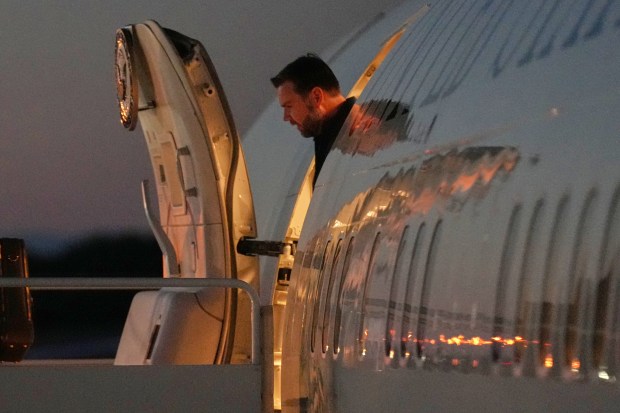What caused more disruption this past weekend? Chicago’s vehicular marking of Mexican Independence Day or the efforts by the city to block the jubilant trajectory of its motorized celebrants?
If you were out and about in downtown Chicago on either Saturday or Sunday night, we bet you’d say the latter. The city’s stated “zero tolerance” for car caravans came with a high price.
On Saturday night, it was impossible not just to enter the Loop in a vehicle but also to get away from its logjams. You just can’t block off one way or the other; one’s person’s entry is another’s exit.
Drivers could not escape Wacker Drive by going north on Franklin, LaSalle or Dearborn streets, thus turning Wacker and its environs into a parking lot. On Sunday night, police closed northbound DuSable Lake Shore Drive entirely, so if you were trying to get from the South Side to the North Side in any kind of timely way, it was near impossible. Elsewhere in the city, we witnessed fraught residents jumping out of their cars on Lake Shore Drive to argue for a way home with snowplow drivers from the Department of Streets and Sanitation, which merits renaming as the Department of Streets, Sanitation and Big Blocking Machines.
We were asked to show a driving license to gain entry onto State Street on the Near South Side on Sunday night, which was strange in and of itself, and then denied access because the street apparently could not be used as a route to get anywhere even a few blocks beyond. Most of the people driving around, trying to get to work, leisure activities or home, had no idea which streets were open or closed; that appeared to be a moving target all weekend long, including for the cops and the media. Even for those used to the annual disruptions of this weekend, the sudden blockades were more invasive this time around. Seemingly minor streets on the Near West Side still merited a police-enforced barrier, including some just a couple of blocks long.
In essence, the city closed most all the streets leading to and from the central business district even though businesses there thought they mostly could carry on as normal. And while the city said it had set up access points for residents, most did not know how to find them. And they didn’t help you get from one neighborhood to another or back home from a night out to the suburbs.
Part of the issue here, of course, is that the Mexican Independence Day celebrants are not typically going to any destination in particular and that their numbers now are formidable.
According to the 2020 census, more than 590,000 residents of Chicago have full or partial Mexican origins, so this weekend is potentially a big deal for roughly 1 in 5 Chicagoans. For many, the fun flows from cruising the streets, ideally with a pickup truck and an oversized Mexican flag. In our extensive evening travels, we didn’t see any serious lawlessness, beyond open containers and families exiting their vehicle on a freeway (which we don’t recommend). But we saw plenty of roiling confusion on all sides about where to go, either to have fun or to get away from it.
Clearly, something needs to be done and it will require more accommodation and compromise on all sides.
The percentage of Chicago’s population with roots in Mexico has exploded (the percentage of Chicagoans with Mexican origins grew by 50% just between 1990 and 2000 and that growth is mirrored in suburban Cook County). That’s likely why the weekend seems to catch the city by surprise every year; the number of people celebrating is not just large but increasing fast.
The situation as it played out was far from ideal. Many businesses rely on suburbanites coming downtown for the weekend to eat or watch an artistic offering as the fall season kicks off. And residents should be able to get where they want to go without undue hindrance. In a free country, you also should be able to cruise along with your vehicle, assuming you are following traffic and safety laws.
So what are the solutions? Maybe the answer is to close all of Lake Shore Drive for these weekend evenings and let the caravan traverse up and down while the rest of the city goes about its business. Another idea would be to treat this weekend like the Chicago Marathon and close streets along a designated route. Another would be to find more open spaces for revelers, such as Northerly Island or Grant Park (there was a revived festival downtown this weekend, Grito Fest, but, clearly, that did not help much with the roadways).
In the end, though, city streets are shared spaces and everyone has to appreciate that while some hard-working people are out to enjoy the night, and fair enough, others have urgent places to go. Ensuring people can come and leave downtown is vital to both businesses and employment. And with all due respect to the tradition of sitting in (or on) your tricked-out vehicle and burning rubber, there are other ways to wave a flag and honor a nation achieving its independence.
You can also do so on foot, holding the hands of your loved ones and enjoying a beautiful fall night in a city of opportunity.
Submit a letter, of no more than 400 words, to the editor here or email letters@chicagotribune.com.



